 | Name: Gillian McGuinness
Overview: Gillian McGuinness studied human physiology at Manchester University before doing an eighteen-month Diploma in Dietetics at Hollings College in 1977, when there was a ‘dire shortage of dietitians`. She worked in NHS and private hospitals in Manchester and Bristol and then at Birmingham Children`s Hospital from 1990. She remembers that in the late 1970s, children with diabetes didn`t always grow very well or get full employment opportunities or take for granted that they would have children, whereas now she expects them to live long healthy lives and be able to achieve all the same things as people without diabetes.
Hits=5 |
|
|  | Name: Simon Lawson
Overview: Simon Lawson`s father was 65 when he was born and his mother 44, and both died while he was in his teens. His unhappiness affected his public school education and he failed to get a place at Cambridge. Instead he worked at Sotheby`s in London and it was only after he married in 1971 that he obtained a degree and a doctorate – leading to his present work as an Oxford University librarian. He has warm memories of being treated by two eminent consultants – RD Lawrence and John Nabarro – and has always enjoyed knowing as much as possible about diabetes.
Hits=4 |
|
|  | Name: Peter Swift
Overview: Dr Peter Swift was Consultant Paediatrician at Leicester Royal Infirmary from 1979 to 2006. He has published widely on childhood diabetes and produced guidelines for the International Society for Paediatric and Adolescent Diabetes. In a national survey of paediatric diabetes services in 1988, he found many children were not being seen in specialist clinics; few clinics were using HbA1c tests, and they lacked specialist nurses, dietitians and psychological help. By 2004, almost all children were seen in specialist clinics, with more specialist nurses. He still thinks more specialist nurses and dietitians are needed and many more mental health workers.
Hits=4 |
|
|  | Name: Joanne Pinfield
Overview: Joanne Pinfield was only 5 when she had the frightening experience of waking from a coma in hospital and she has found diabetes frightening for much of her life. At school she felt isolated by being the only person with diabetes. She left at 16 to work in a pottery with a sympathetic boss who helped her not to feel ashamed of diabetes, but then reverted to hiding her condition during 12 years working in a factory. Her father`s death in 2001 prompted her to take better care of herself. She married in 2002 and runs a limousine business with her husband.
There are also interviews with Joanne`s mother, Mary Potter, and husband, Nick Pinfield.
Hits=3 |
|
|
 | Name: Joan Wilson
Overview: In 1954, Joan Wilson was appointed as a Diabetes Specialist Health Visitor by Dr. Joan Walker of Leicester Royal Infirmary, who believed that patients would benefit from being ‘taught how to live their lives at home`. As a fully trained nurse, she could claim to be one of the UK`s earliest Diabetic Specialist Nurses. She visited homes and gave patients her own home phone number; visited schools and workplaces; liaised with district nurses and GPs and provided patient education at the Infirmary clinics. She was involved in consultant-led clinics in smaller towns and in helping GPs to set up clinics.
Hits=4 |
|
| 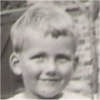 | Name: Francis Andrews
Overview: Dr. the Rev. Francis Andrews was diagnosed with diabetes on the day that war was declared in September 1939. He was the son of a doctor who`d worked as a medical officer in Flanders during the First World War. Francis also trained to be a doctor, and eventually became a consultant physician in rheumatology, having been advised not to specialise in diabetes. He married and has 6 children, 15 grandchildren and 1 great-grandchild, none of whom have diabetes. He took early retirement to train as a Catholic priest, and was ordained in 1994.
Hits=2 |
|
|
 | Name: Kevin Jones
Overview: Kevin Jones` father worked in a Welsh mine, then joined the Royal Navy and worked his way up from sick berth attendant to Lieutenant Commander. Kevin went to various grammar schools in Navy ports and left at 18 to train as an accountant. He worked for several large companies, unhindered by his diabetes, but has had more problems in recent years. In 2002 his leg was amputated, but he had great help from the Limb Centre and now walks and drives with an artificial limb. He loves jazz, and is pictured with a statuette of a jazz musician.
Hits=2 |
|
| 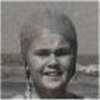 | Name: Victoria
Overview: Victoria`s father was a bank manager and she attended a private school and a grammar school. At 16, she developed an eating disorder after a boyfriend dropped her because she was diabetic, and at 25 she briefly rebelled against her diabetic diet. Otherwise, she feels diabetes has caused few problems and hasn`t prevented her from achieving her ambition of becoming a teacher. She thinks perhaps it did influence her not to have children, but she enjoys life with her partner, and is grateful for new blood testing equipment and other developments which have given diabetics greater freedom.
Hits=2 |
|
|
 | Name: Leon Cowdery
Overview: When Leon Cowdery left school at 15, his diabetes barred him from his chosen profession of sign-writing because he was not allowed to go up a ladder. He worked as a cycle mechanic and then, in order to avoid going to his parents` Seventh-day Adventist church, he took up floor-laying at weekends. This led him into the building trade and he has been going up ladders ever since! He designed the house in which he lives and, now that he`s semi-retired, he helps his wife with gardening and maintains four motorbikes from the 1950s.
Hits=2 |
|
|  | Name: Margaret Elliott
Overview: Margaret Elliott`s newly-qualified local doctor diagnosed diabetes as soon as he walked through her front door - from the smell of acetone. Her family was poor but managed to pay for some medical care through a thrift club. Her parents did her injections for her and her husband did them after she married at 20. She was advised not to have children, but had 3 normal births and one caesarean. She attributes her good health to her husband`s care and a very strict diet. She has smoked 6 or 7 cigarettes a day since she was 14.
Hits=2 |
|
|
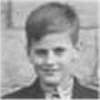 | Name: Peter
Overview: Peter`s father was a professor and both parents were well-informed about diabetes after his older brother was diagnosed in 1945. They spotted Peter`s symptoms early and at first he only needed four units of Lente insulin to last 24 hours. He was educated at Oxford and worked in the steel industry for several years. He is now a management consultant and has few problems associated with diabetes. He has recently remarried, after being widowed in 2003, and has a daughter with diabetes who is `much more able to cope with disturbances to her daily routine than I am`.
Hits=2 |
|
|  | Name: Lisa McGregor
Overview: Lisa McGregor was diagnosed shortly before starting secondary school. She spent two weeks in hospital, where she learnt to inject herself from the outset. She was given a `traffic light` book, listing forbidden and permitted foods, but didn`t follow the diet strictly. She injected herself twice daily for 20 years until moving to a more flexible regime, with four injections, in 2003. She describes it as a DAFNE regime (Dose Adjustment for Normal Eating), but hasn`t attended a DAFNE training course. She has had few health problems, but several frightening experiences as a result of hypos.
Hits=2 |
|
|
 | Name: Emma Cherry
Overview: By the time Emma Cherry was diagnosed in 1988, GPs were familiar with childhood diabetes; hospital children`s wards were used to dealing with it, and Emma remembers a wonderful diabetes specialist nurse who showed her how to inject herself, and later called at her home twice daily to supervise her early attempts. Her schools, university, and colleagues at work all accepted her without any fuss, and she has never been made to feel `different`. Injections and blood tests are such a routine part of her life that she wonders how she would cope with a cure!
There is also an interview with Emma`s mother, Zin Cherry.
Hits=2 |
|
| 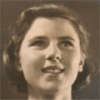 | Name: Margaret Williamson
Overview: Margaret Williamson was brought up in a village in North Yorkshire, the only daughter of an industrial chemist. Her mother was diagnosed with diabetes when Margaret was aged 2, and put on a diet of no carbohydrate with high quantities of insulin. When Margaret was diagnosed, a Newcastle consultant, James Spence, put mother and daughter on a more modern regime of high carbohydrate, which was weighed at each meal. After school, she went to business college in London, and worked as a secretary for directors of scientific institutions. She married a Cambridge research scientist and had two children.
Hits=1 |
|
|
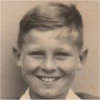 | Name: Ian Vokins
Overview: Ian Vokins was diagnosed shortly after leaving junior school and when he joined his secondary modern school, he was treated `like an alien` and fed dried apricots at every school dinner for 3 years! He was bullied throughout his school-days and left as soon as he could, aged 15. After that, life `seemed to open up` and he `started learning` while he worked as a technician in fields as diverse as atomic energy, cryogenics, orthotics, packaging, and space science. His work often took him abroad, and he says that diabetes hasn`t stopped him doing anything, apart from flying aeroplanes!
Hits=1 |
|
| 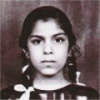 | Name: Bena
Overview: Bena was born in the Kigezi District of Uganda, the daughter of a wealthy businessman. She was diagnosed when nearly 12 and then shunned by children who thought diabetes was contagious. She lived on chapattis and spinach and a bitter vegetable juice thought to cure diabetes. When Idi Amin expelled Ugandan Asians in 1972, her family came to England, and she was delighted to be allowed to eat a wider range of food. She eventually married an Englishman and had two daughters. She works as an office administrator, in a social services department that supports disabled children.
There are also interviews with Bena`s daughter, Emma and her husband, Terry.
Hits=1 |
|
|
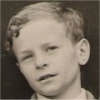 | Name: Philip
Overview: Philip was diagnosed aged 9 and considers that it`s better to get diabetes young, when the body is more adaptable. He attended a grammar school, and regrets that he often used diabetes as an excuse to miss school. He left at 16, but acquired more qualifications later and became a successful accountant. His diabetes was well controlled and caused little trouble for most of his life, until he began to get early morning hypos a few years ago. (He finds the term `hypo` unhelpful, since it`s used to refer to anything from a mild sensation to complete unconsciousness.)
Hits=1 |
|
| 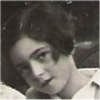 | Name: Erika Harding
Overview: Erika Harding`s father was Jewish and, in 1939, after the Nazis invaded Austria, she came by boat to England. When she looks at her photo of the thin, hollow-eyed little girl on the boat, she`s sure that she already had diabetes. After diagnosis, she was treated at King`s College Hospital, London, by R.D. Lawrence (co-founder of the British Diabetes Association, now Diabetes UK). She left grammar school at 18 and worked as a medical laboratory scientist until she retired. She and her artist husband have both played in many chamber music ensembles.
Hits=1 |
|
|
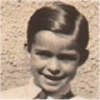 | Name: Richard Fawkes
Overview: Richard Fawkes` father worked as a railway engineer in Argentina and Richard was brought up in an expatriate British community. His father died during the war, and he returned to England in 1945 to work in the family firm. He shared a house with his mother and sister for many years, but has lived alone since 1980. He has sung in amateur musicals, renovated houses, including the one in which he now lives, and painted 1,600 paintings, most of which he has sold. He is currently recovering from a heart attack.
Hits=1 |
|
| 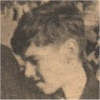 | Name: Fred
Overview: Fred`s family was poor and food was rationed in his early years: he remembers that a Mars bar was cut into slices to last 4 or 5 days! After diagnosis, he was told that `I had to control the diabetes rather than the diabetes control me` and has tried to follow that advice ever since. He lost his sight in 1978 and his second wife left him because she couldn`t cope. He began a successful business making garden furniture and now lives with his third wife, who is also blind.
Hits=1 |
|
|
 | Name: Patrick Grogan
Overview: Patrick Grogan was treated at King`s College Hospital by R.D. Lawrence (co-founder of the British Diabetes Association, now Diabetes UK) and he remembers Lawrence commenting on the amount of carbohydrate at a hospital Christmas party. He has always kept to a healthy diet, has had lots of exercise as a machine-tool fitter and maintenance worker, and has had no diabetic complications. He`s a member of NHS Concern and the West Midlands Pensioners Convention and says that taking an interest in improving society is what keeps him going.
Hits=1 |
|
|  | Name: Mary
Overview: Mary`s father was a baker and her mother a factory worker. When she was diagnosed, the hospital suggested that they should buy a book on diabetes by R.D. Lawrence, but she doesn`t think they read it. She feels she was given very little information, and remembers thinking that her diabetes might disappear when she began to have periods at 15. She made little effort to control her diabetes until she went to a clinic in Oxford in 1983. She works as a podiatrist and reckons that about 75% of her patients have diabetes
Hits=1 |
|
|
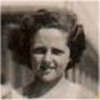 | Name: Ann
Overview: Ann came to England in 1945, and was diagnosed when the matron at her boarding school found her drinking the bath water. Her mother had worked as a nurse at Kings Hospital, London, and took her daughter there, to be treated by R.D. Lawrence (co-founder of the British Diabetes Association, now Diabetes UK). She has memories of being made to go into a hypo, of glass syringes, thick needles, and embarrassing urine tests. She worked as an occupational therapist, and brought up two children alone. Despite eyesight problems, she now makes a living as an artist.
Hits=1 |
|
|  | Name: Patsy
Overview: Patsy is one of ten children. Her parents emigrated from Jamaica in the 1950s. Her mother worked as an auxiliary nurse and her father as a builder. After diagnosis, she resented having to weigh portions of carbohydrate, while her family could eat what they liked. She still calculates the weight of food. The question `Why me?` has persisted throughout her life. She feels that everything possible has gone wrong with her health and she is now on haemodialysis. But her love for her young son keeps her going and, despite poor health, she`s determined to spend time with him.
Hits=1 |
|
|
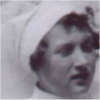 | Name: Monica Winn
Overview: Monica Winn was the only child of a naval officer and grand-daughter of a doctor who diagnosed her diabetes only 4 years after insulin was first manufactured in England. She nearly died of pneumonia; had bronchitis every winter; spent much time in bed and never attended school. Her parents were told she wouldn`t live beyond 14 and she was told that she wouldn`t have children. She had a daughter in 1945 and recorded this interview when she was nearly 86. She is very fit and copes well with slight memory loss after a series of mini-strokes.
Hits=1 |
|
| 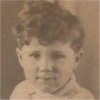 | Name: Allan Jones
Overview: Allan Jones` father was a miner with six children. They had little money but had to pay for insulin and equipment until the National Health Service was created in 1948. They couldn`t afford cotton wool and re-used needles until they were blunt. When Allan was 15 he got a job as a messenger on the railways but had to pass a medical before being promoted. He feared he would lose his job if his diabetes was discovered, so took with him a sample of his brother`s urine! He passed the medical and worked happily on the railways for 30 years.
Hits=1 |
|
|
| Search returned 49 matches |